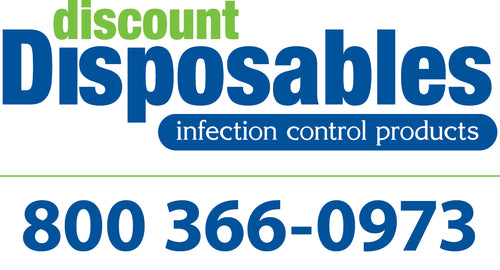Infection Control can be a daunting and time-consuming task for anyone. Putting the right procedures in place with the right people steering it is crucial to the success of any Infection Control Program. The first steps in getting the program up and running are the most important, they are the basics that lay the foundation for success. This by no means a comprehensive list to setting up a program but a mere generalization to help get started.
Written Infection Control Policy
Every practice should have an Infection Control Program in place with a written policy that covers all of the CDC Guidelines. All dental settings, regardless of the level and type of care provided, must make infection prevention a priority and should be equipped to observe standard precautions and other infection prevention recommendations contained in the CDC's Guidelines. A summary of the Guidelines for your reference can be found here: https://www.cdc.gov/oralhealth/infectioncontrol/pdf/safe-care2.pdf.
Every office is unique and daily operations vary per practice, therefore each practice's written policy will vary. The CDC Guidelines are to be used as an outline not a concrete policy. The policy should cover all of the same CDC recommendations, and once it is drafted it will then need to be tailored to the daily routine and protocol that the practice already has in place. The policy should also address occupational health needs, including employee vaccinations, management of exposures or infections in staff, and compliance with OSHA bloodborne pathogens standard.
Having a written procedure allows your practice to have a concrete plan of action, with something to review and audit on a regular basis. Once a written policy is in place it should then be disseminated throughout the practice by an appointed Infection Control Coordinator. All Staff (contractual and non-contractual) that might be occupationally exposed to infectious material, contaminated supplies, equipment and/or environmental surfaces, water, or air should receive training and a copy of the policy.
Infection Control Coordinator
An Infection Control Coordinator is a single point person at the front and center of the Infection Control Program. This person should be someone that is well organized, trustworthy, and ideally in your office on a full-time basis. The Coordinator will be the point person for all things Infection Control, Training and Exposure Mitigation.
The role consists of but is not limited to the following:
- Reviews and maintains existing policies and procedures
- Identifies gaps
- Maintains proper documentation, permits and renewal information
- Provides training and education – new and ongoing
- Monitors compliance through observation
- Ensures that equipment and supplies are available to prevent a possible breach
- Maintains open and unbiased communication with all staff
It takes time and a keen eye to be a successful Infection Control Coordinator so make sure that that person is allotted extra time in their week to accommodate for the extra hours it will take to successfully run the Program. This position is not to be taken lightly and those considering it should be aware of the expectations and requirements before being appointed.
Training
The CDC requires training and review of the Infection Prevention Policy on a regular basis, at a minimum annually. Doing review and training on a regular basis will ensure dental staff compliance and lower the risk of cross contamination. Training should be done by the Coordinator anytime policy is not being followed, new staff (contractual and non-contractual) joins the practice, and at a minimum on a yearly schedule.
Being proactive with training and involving the staff will send a message to everyone that this is important to the practice which in turn will make the policy and program more effective. If you make the primary concern staff safety, the staff is more likely to pass that same approach along to the patients.
Staying up-to-date on the latest infection control standards will be a large part of the Coordinators job. It is best done by taking courses, reading articles, utilizing local resources and gathering as much information as possible. Scheduling in office product training with your Vendors, attending sponsored "lunch and learns", and networking will be essential in staying up to date on regulations and products that are vital to the program's success.
Risk Assessment
Last but not least, assess how the practice is doing - has the Infection Control Policy and Program been effective? If it's not effective why and what needs to change? Remember the Infection Control Program is a living document, that will change and grow as new regulations and polices are set forth.
Being unaware of the potential hazards in the work environment makes the staff and patients more vulnerable to injury and exposure. Just because there have been no accidents or exposures reported it does not mean that there have not been any incidents that should have been. In turn if the staff sees that the practice is being proactive in prevention, the polices are more likely to be followed.
An assessment of the practice can be done by the coordinator, a trusted staff member that is aware of infection control guidelines, or an outside third party.
How Discount Disposables Can Help?
Discount Disposables is your infection control and disposable products supplier. Since 1989, we have been partnering with dental and medical professionals providing products and information pertaining to infection control, safety, CDC and OSHA compliance.
Our biggest strength and value to our customers is our flexibility to work one-on-one with each office. We are your Infection Control Experts, let us help you with compliance today.
If you have questions or concerns about your Infection Control Program contact us by calling 800-366-0973, emailing info@ddicp.net or chatting on our website www.infectioncontrolproducts.com.
- References
- Guidelines for Infection Control in Dental Health-Care Settings-2003. Atlanta, GA: Centers for Disease Control and Prevention, US Department of Health and Human Services; 2003.
- OSHA and CDC Guidelines: Combining Safety with Infection Control and Prevention for Dentistry. 4th ed. Atlanta, GA: Organization for Safety, Asepsis and Prevention.
- https://www.osha.gov/pls/oshaweb/owadisp.show_document?p_table=STANDARDS&p_id=9777
- https://www.osha.gov/SLTC/dentistry/standards.html


